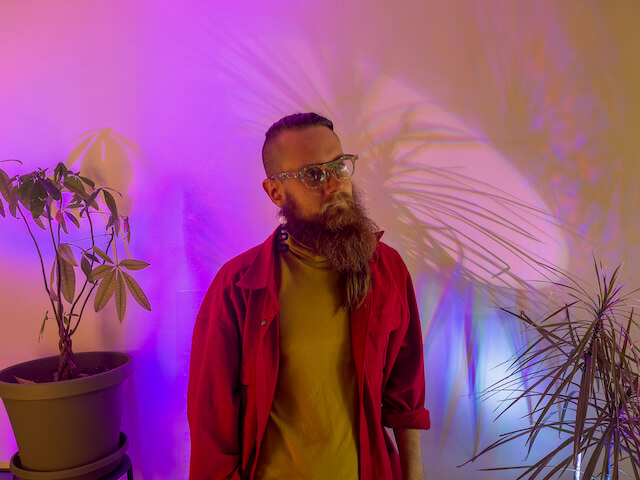Tell us a bit about yourself and what you do.
My name is Corey, I live and work in Chicago. I make “performance art” — which is a very vague term that lets me get away with a lot of hijinks. When I make something there is almost always music and a body, sometimes many bodies. Sometimes it happens on a screen, sometimes in virtual reality, sometimes in a theater, sometimes outside near particularly interesting architectural sites.
To make money I teach in the Contemporary Practices department at the School of the Art Institute and also do various freelancey gigs around town (largely sound design for theater and dance). I grew up in the great state of Michigan, went to music school at the University of Michigan, and then moved to Chicago in 2014. I’ve been swooning over the city ever since.
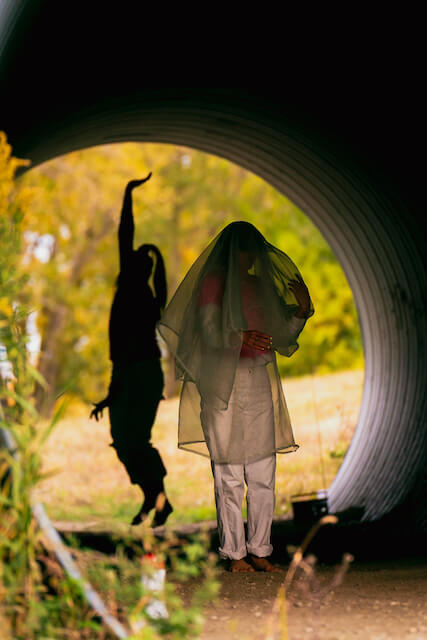
Your work spans across multiple mediums and concepts. What would you say is the common through-line or themes throughout your work?
A rough list: the hyperlocal/critical regionalism (for me, a midwestern perspective and outlook, a sense of a regionalist point-of-view), an emphasis on feeling or sensation (some might say “phenomenology” here, but I’m not quite sure if I feel confident enough to use that word entirely), queerness as liberation. Something that I try to do with every large new work is to include a cover song of some kind (it is important to me to have ties inside of the work pointing elsewhere — an indication that we are in the world, not outside of it.) I shy away from “suspension of disbelief” and I hope that my work offers a (Brechtian? Neofuturist?!) critique of that mode. My own voice and my own body show up in the work a lot, mostly for budgetary reasons — I’m a cheap date.
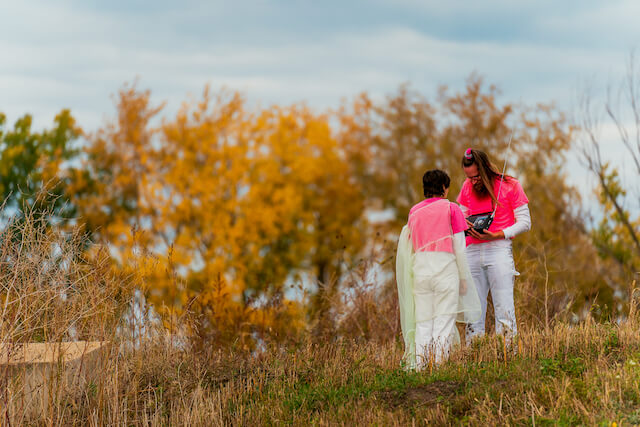
Can you talk a little about your “hybridized performance style”, and how you go about creating performances & scores?
I find a great deal of permission in the work of someone like Laurie Anderson — someone who refuses to be pinned down, whose work balloons beyond “music” per se or “writing” per se or “art” or “dance” or or or. That floaty middle ground is where I’ve found the most fertile soil.
Maybe that’s being obtuse, here’s another way of saying it — I write music and I write words and I move my body. Those things can all come at once, or piece-by-piece or in any kind of order. As far as process goes, I find beginnings to be extremely joyful. Often they involve jumping into mountains of research — books, articles, site visits, listening, archive.org. Or they involve making sound with no particular end in mind. Or they involve playing loud music and dancing until something interesting happens. The performance reveals itself as you make it, holding both spontaneity and rigidity.
The middle bit of the process is painful and we shouldn’t speak too much about it.
The ending is where the adrenaline kicks in and the intoxication of “performance” gets me. I think sometimes that my career as an artist is just a displaced adolescent dream of being the lead singer for an emo band. There is no drug like it, being onstage, I adore the feeling. That ignites the fire for the next thing and then the process begins again…
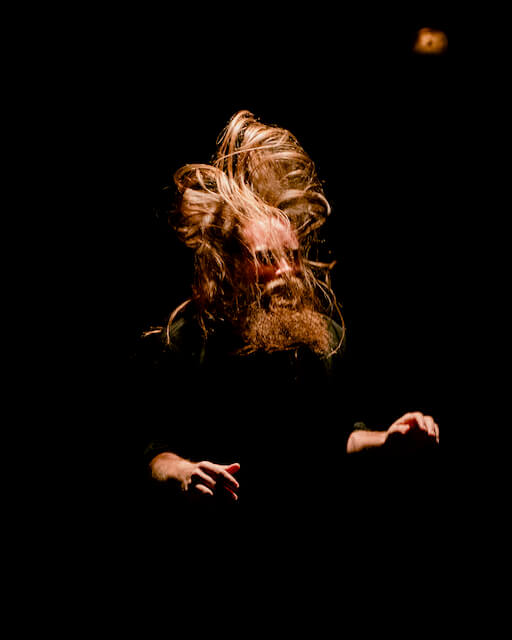
You recently performed an opera titled ‘’Lincoln in New Salem’’. Could you talk about what this opera is about and what inspired it?
Lincoln in New Salem is an “experimental opera” with a center of gravity situated around the period of 1831-1837 in New Salem, Illinois. Abraham Lincoln moved there as a 22-year-old in 1831. These were some of his first moments in Illinois, the bedrock of his political career, the place where he found himself as an adult in the Midwestern frontier.
The piece started its life as a performance film in virtual reality. It exists in an Oculus Quest — you can put the headset on and then see me running around the actual-honest-to-god locales of New Salem. That VR version contains just two movements from the IRL show that premiered at Steppenwolf in January ‘23.
The performance borrows images, actions, flavors from this portion of Lincoln’s biography — wrestling with a local gang of boys, working as a surveyor, protecting a stranger’s coins by hiding them in a sock, serving as a general in the Blackhawk War. The piece resists more traditional theatrical conventions — narrative, obvious proscenium focal points, character, etc, etc.
Lincoln’s life has been so narrativized, so manipulated and used, Lincoln in New Salem was an attempt to wash all of it out and start again. My hope was to create a landscape of young Lincoln (maybe also young America) and let images and music drift past — offering these to the audience as a buffet from which they might assemble their own understandings.
The more time I spent with this period of time in the development of the US, the more I became convinced that this period is a skeleton key to understanding our present-day predicament. Inside of this early 19th century moment — the colonialist expansion of the country, the specter of a looming civil war, a blossoming understanding of “nation” and “history.” To say nothing of the sexuality and day jobs and self-education and daily slow experience of arguably *the* most important president.
Musically the piece is all over space and time — borrowing from 19th-century hymns, 20th-century minimalist opera, and 21st-century hyperpop shrieks.
A fact that has haunted me — Chicago and New Salem are of the same ilk. They were about the same size (approximately 100 people) in 1831. By 1841, New Salem had evaporated and Chicago had exploded. This was the story across the old west — attempts at new towns springing up and then dying or metastasizing. The place where I live has the same beating heart as New Salem, that frontier village, and the same sins stain it. That is what the opera is about, at least to me, at least at this moment.
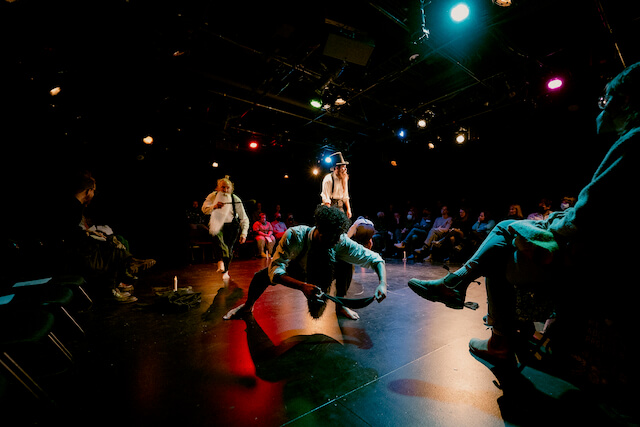
What was the process like creating ‘’Lincoln in New Salem’’ – for example, blocking, working with other performers etc. Did any unexpected challenges arise?
Sometimes the world conspires against you and forces your hand. We had about six rehearsals to put together Lincoln in New Salem. Scheduling conflicts, other projects, a limited budget!
From the beginning, we knew this would be a challenge, would necessitate a hard-and-fast decision-making, which is…not my favorite way to make a piece. But I think it ended up playing very much to our advantage! We felt free to play and experiment and dream in real-time with a light touch. I feel very grateful for that approach being hoisted upon me.
A more nitty-gritty practitioner answer: Most of Lincoln in New Salem was composed as loose improvisational scores — a general sense of what actions happened at what time, but a lot of room for the details to be found and explored in the moment. The music was all pre-recorded and composed months in advance, giving us the architecture for the show. I would love to get more choreographic with this work in the future, but for our process, this made sense
It is hard to overstate how important the ensemble was to the show — I was working with the most brilliant team of performers I’ve ever worked with: Bryan Saner, Courtney Mackedanz, Zach Nicol. I am not exaggerating…they are Chicago’s best. I feel so humbled by their contributions to the thing, truly the work owes any success to them.
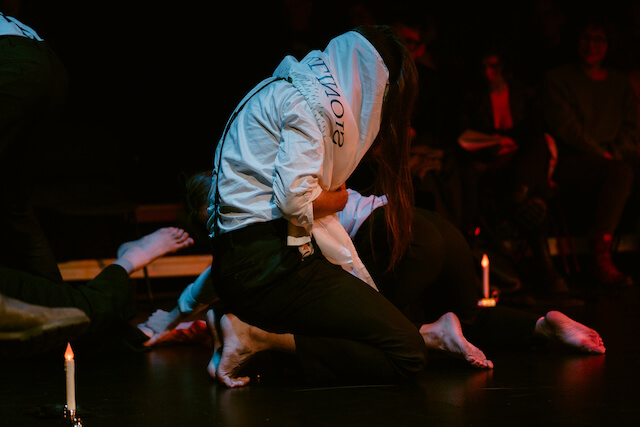
In what ways, if any, has living and working out of the midwest impacted / inspired your practice?
The Midwest is everything to me.
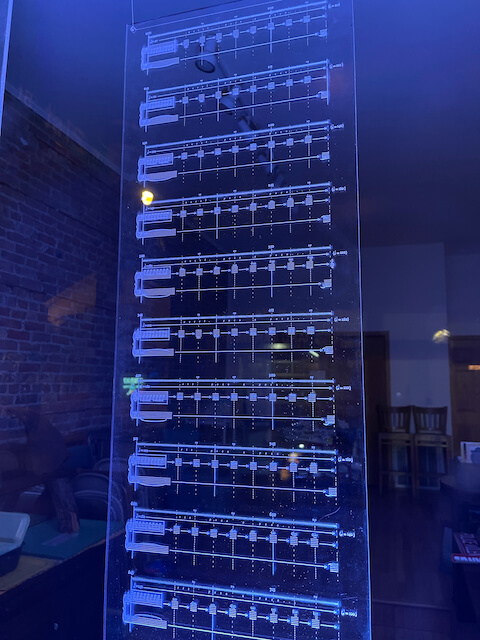
What has been the most memorable performance you have created / been involved with? Why?
A standout certainly must be Essay on the Emil Bach House, which we performed back in 2019. We rented out the Frank Lloyd Wright-designed Emil Bach House, filled the home with performers and instrumentalists, and invited audiences to come experience an “architecture tour.” We performed 45-minute tours every hour, on the hour. It felt like both endurance performance and long-form minimalist improvisation.
In a very delightful twist, because the house is technically a vacation rental, I was able to sleep in the home for the weekend of the performances. It was…so cool to wake up and look out a FLW stained glass window at the roar of Sheridan Road.
I’m burying the lede though. Most memorable from that experience: the Emil Bach House provided the setting for the best shower of my life — there were four (five, maybe?!) different nozzles shooting water out at me. From different locations in the shower! Front, back, side on side on side! Excellent seal on the glass doors, the steam just hung out next to me. Unbelievable water pressure. Just hot enough to be hypnotizing, not too hot. Should everyone get a shower like that in their lifetime.
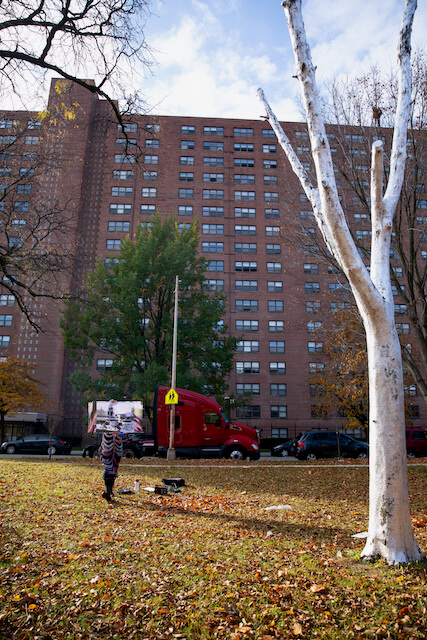
What are you currently listening to and / or reading?
I just returned from a trip to Marseille, so I’ve been floating in music from the south of France. Corsican music has completely blown my mind, especially the albums Chjamu a puesia & C’hé dinù by Canta U Populu Corsu. Wildly diverse, endlessly delightful.
Some much older French music that has been turning me upside down is the work of Guillaume de Machaut, especially his Messe de Notre Dame. I’ve been told Ensemble Organum’s version is the definitive. (A teacher of mine once described medieval music like this as “music by aliens” and I’ve never shaken off that description. It’s both entirely familiar and extremely bizarre.)
Back stateside, the Soft Pink Truth’s recent work has been on constant repeat, accompanying my trips to the Marianos, the shower, the #9 bus from Bridgeport to Wicker Park. It’s nearly perfect music, dripping with sensuality, playfulness, and groove.
What are your biggest sources of inspiration?
Inspiration is a funny thing to think about. Sometimes I feel like every moment is saturated with potential provocation. Other times I feel very sleepy and not especially excited to make. There’s that old story about the writer who sits at their desk every day at 9am and says to inspiration, “I’ll be here if you need me!”
That all being said, there are things I come back to — the sound of a double reed instrument (I just bought a zurna in France!), the design sensibility of chairs (the more obtuse or colorful or difficult to sit in, the better), midwestern architecture, the histories of the places around us. In moments of desperation or curiosity, I turn to those old friends Oblique Strategies and Lake Michigan.
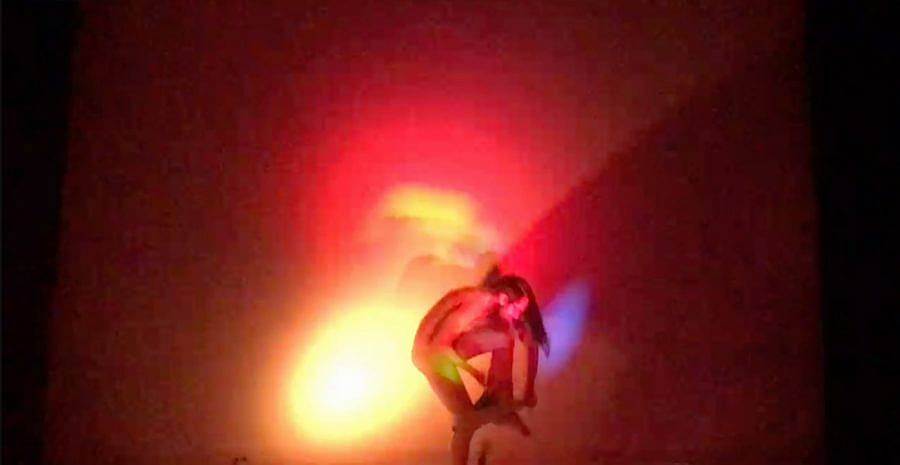
Any upcoming projects you are excited about?
I’ve earmarked February as a time of repair and rest — a project I’m especially excited to pursue. There are other things with a bit more bombast, though. I’m helping with sound for Erin Kilmurray and Kara Brody’s latest work. I’m performing at the Hyde Park Art Center in early March with a riff on Lincoln in New Salem. I’ve been threatening to make a pop album for years now & I’m finally (finally!) doing it, in collaboration with the genius of Paige Naylor (a project we are calling 4d Girlz, which maybe clues you into the vibe. Our first music video coming soon!)
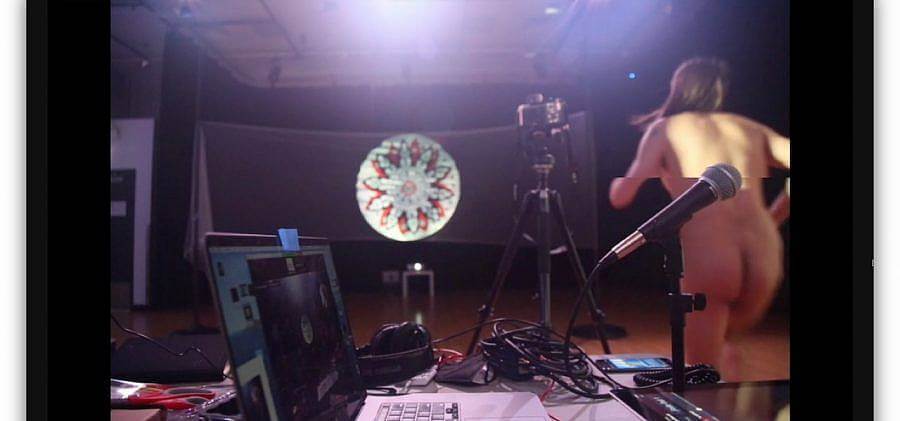
What are your hopes and fears for the future?
A beautiful and overwhelming question! I try not to indulge in fear too often (I’m also terribly afraid of scary movies, so maybe “indulge” isn’t the right phrase, maybe it’s “I actively run from…”) but I fear that we’ll lose the reliability of the CTA and not get it back, that I’ll get sick and not have the appropriate level of health insurance, that a numb ambivalence will further saturate the zeitgeist.
Hopes for the future? Abolition, genuinely revolutionary climate action, expanded funding for the arts, a cultural shift toward rest over action, expression over praise, collaboration over critique. There are moments (in my apartment, in the classroom, in the workshop, in the rehearsal room) when these ideas seem nascent, seem entirely possible. If I have hope, I find it there — in the hyperlocal, in the chosen-familial, in the soft murmuring of a classroom before the business of the day. There is so much work to do, there is so much beautiful work to do.
Interview Conducted and Edited by Ben Herbert
